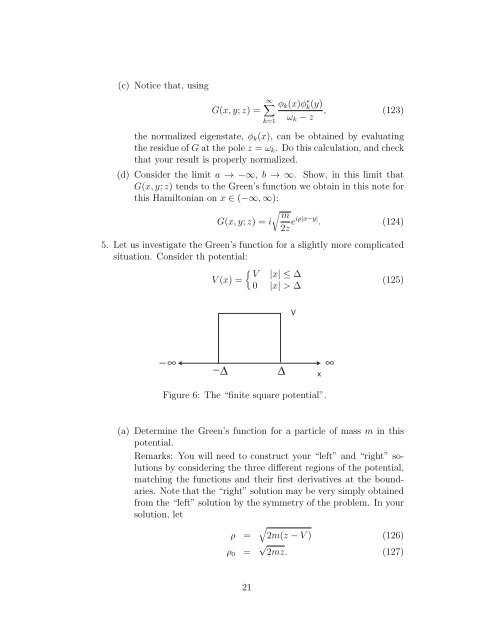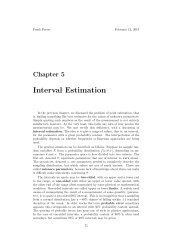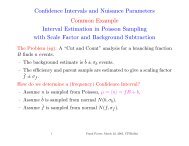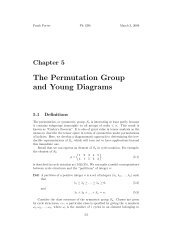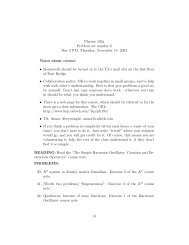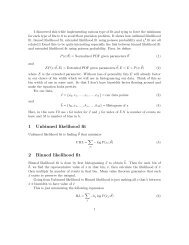1 Introduction 2 Resolvents and Green's Functions
1 Introduction 2 Resolvents and Green's Functions
1 Introduction 2 Resolvents and Green's Functions
You also want an ePaper? Increase the reach of your titles
YUMPU automatically turns print PDFs into web optimized ePapers that Google loves.
(c) Notice that, using<br />
G(x, y; z) =<br />
∞∑<br />
k=1<br />
φ k (x)φ ∗ k(y)<br />
, (123)<br />
ω k − z<br />
the normalized eigenstate, φ k (x), can be obtained by evaluating<br />
the residue of G at the pole z = ω k . Do this calculation, <strong>and</strong> check<br />
that your result is properly normalized.<br />
(d) Consider the limit a → −∞, b → ∞. Show, in this limit that<br />
G(x, y; z) tends to the Green’s function we obtain in this note for<br />
this Hamiltonian on x ∈ (−∞, ∞):<br />
G(x, y; z) = i√ m<br />
2z eiρ|x−y| . (124)<br />
5. Let us investigate the Green’s function for a slightly more complicated<br />
situation. Consider th potential:<br />
{ V |x| ≤ ∆<br />
V (x) =<br />
(125)<br />
0 |x| > ∆<br />
V<br />
_ ∞<br />
_ Δ<br />
Δ<br />
x<br />
∞<br />
Figure 6: The “finite square potential”.<br />
(a) Determine the Green’s function for a particle of mass m in this<br />
potential.<br />
Remarks: You will need to construct your “left” <strong>and</strong> “right” solutions<br />
by considering the three different regions of the potential,<br />
matching the functions <strong>and</strong> their first derivatives at the boundaries.<br />
Note that the “right” solution may be very simply obtained<br />
from the “left” solution by the symmetry of the problem. In your<br />
solution, let<br />
√<br />
ρ = 2m(z − V ) (126)<br />
ρ 0 = √ 2mz. (127)<br />
21


